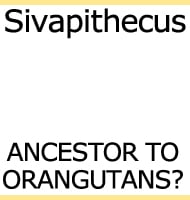Branisella
In Depth At first glance the lack of fossils might make Branisella not seem an important primate, but here you need to appreciate two things; where the fossils have been found and how old they are. Dating to the Chattian stage of the Oligocene period about twenty-six million years ago, Branisella was and at the … Read more
